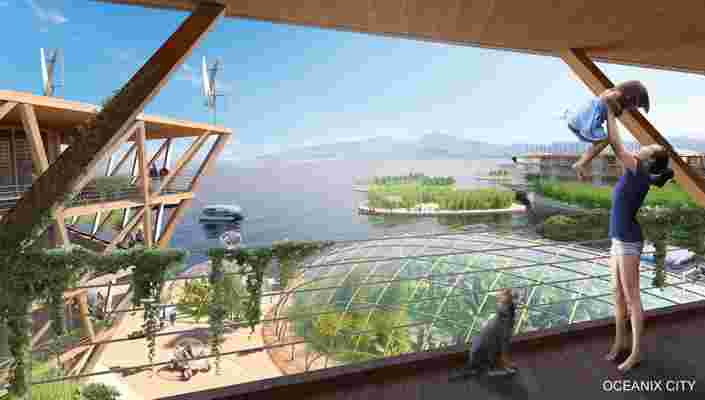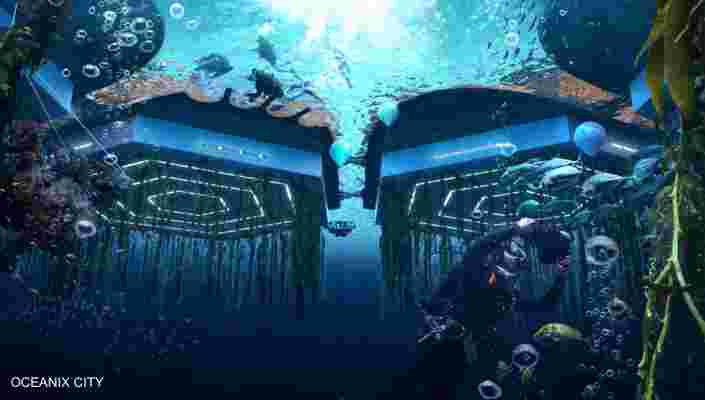Policymakers, climatologists, and architects have long grappled with how to make our cities more resilient, especially given that—if current trends persist—90 percent of the globe’s largest cities face flooding and extreme weather. Recent disasters such as Cyclone Idai in Mozambique and Hurricane Sandy in New York have made the need for practical, cost-effective solutions all the more urgent.
Bjarke Ingels has put forth a radical new proposal to the United Nations. The Danish architect— along with a cross-disciplinary team of engineers, inventors, artists, and thinkers—yesterday unveiled Oceanix City, an interconnected network of buoyant, hexagonal “islands.” These modules can be linked together and scaled up in fractal-like configurations to form city blocks, neighborhoods, or entire cities.
According to Ingels and Oceanix CEO Marc Collins, the floating city was developed to be affordable, safe, and ultra-sustainable, in keeping with development goals set forth by the U.N. General Assembly. These speculative settlements would be entirely self-reliant, subsiding off of water collected, desalinized, and stored on-site, with food grown through aquaponics and vertical farming. Oceanix City would produce zero waste (everything would be designed for disassembly and reuse) and rely almost entirely on human-powered transport, such as bicycles. Artist Olafur Eliiason (who couldn’t be physically present, but was beamed into the meeting via a robotic screen) has been tasked to develop the cultural components of the project,

A rendering shows a woman and child near the greenhouse. A few of the wind-powered generators can be seen as well.
The plan may sound futuristic—and idealistic—but it’s not science fiction, Ingels insisted, in front of an audience of U.N. delegates, scientists, Nobel Laureates, and activist Suzy Amis Cameron—incidentally, director James Cameron’s wife. “It won’t be Waterworld ,” Ingels said, referencing the dystopian 1995 Kevin Costner flick. “This is simply another form of human habitation.” And as prototypes Ingels pointed to a series of experimental floating homes he designed in Copenhagen that will eventually be deployed in Gothenburg, Sweden, and Paris.

The plan would allow settlements to grow food through aquaponics and vertical farming.
Inevitably, it will require time, strategic partnerships, and investment to get such a project afloat, the round table’s organizers acknowledged. “Guess what, it’s hard to say to a lender that our country is going under,” says Collins, who announced that his company is establishing a multidisciplinary trust to map out next steps.
But, as Nobel Prize–winning economist Joseph Stiglitz pointed out during the discussion, “the only way we’re going to figure out how to do these things is to do these things.”

Leave a Reply